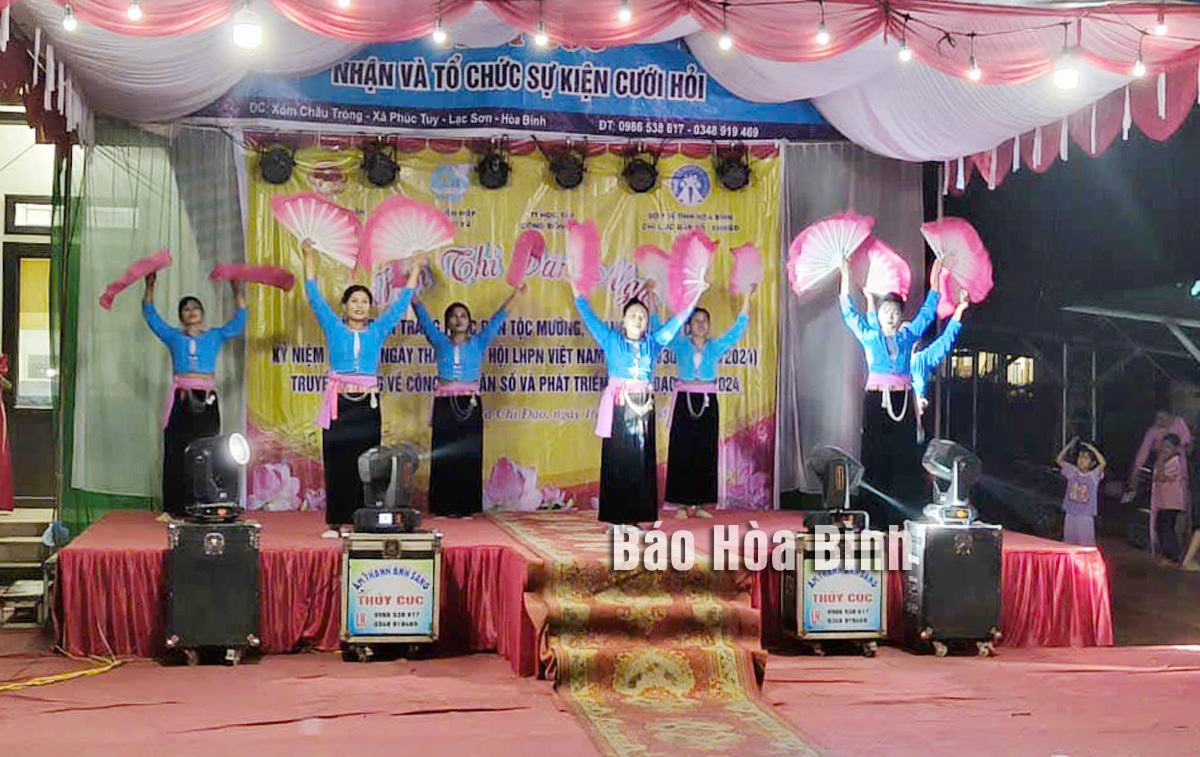
Hoa Binh province has shown strong performance in family planning by effectively implementing directions and plans in the field, including Directive No. 12/CT-UBND issued by the Chairman of the provincial People’s Committee on August 4, 2021 on rolling out measures to maintain the policy of each couple having two children, which is stated in community rules and the regulations of agencies, organisations, and units across the province of Hoa Binh for the 2021 – 2025 period.
The efforts have contributed to fulfilling
objectives outlined in the Action Plan No. 56/KH-UBND, released by the
provincial People's Committee in March 2021 for the implementation of Vietnam's
Population Strategy for the 2020 - 2025 period, with a vision until 2030. The
goal is to continue reducing birth rates, ensuring and firmly maintaining a
replacement-level fertility rate, and rapidly bringing the overall fertility
rate of the entire province to the replacement level by 2025.
The Hoa Binh Population and Family Planning Sub-Department, in
coordination with the Women’s Union of Chi Dao commune of Lac Son district
organised an art competition and population policy communication programme.
Nguyen Thi Minh Phuong, Director of the provincial Population and Family
Planning Sub-Department, stated that over the past three years, the
implementation of Directive No. 12 has achieved notable results. The provincial
Steering Committee for Population and Development Affairs has established two
inter-agency inspection teams, carrying out two rounds of inspections in 2022
and 2023, evaluating eight district and city Population Steering Committees,
four departments, and some affiliated units; 14 commune-level Steering
Committees; and 42 villages. Previously, the district and city-level Population
and Development Steering Committees had conducted inspections and evaluations
of the Steering Committees at the commune, ward, and town levels. In 2024, 10
workshops have been held at various districts and cities, attended by 401
delegates. These workshops focused on discussing solutions to difficulties in
incorporating population policy content into local community rules and
coordinating 12 key meetings at the commune level to pilot the implementation
of specific measures to address violations related to the birth of a third or
subsequent child. Additionally, Guideline No. 207 on measures to address
violations of population policy has been implemented to help localities
incorporate these policies into community rules and the regulations of agencies
and organisations.
Despite the achievements, implementing Directive No. 12 still faces several
challenges. In some localities, the deep-rooted preference for sonshas
driven many families to intentionally have a third child. Some regulations in
community rules remain vague and lack deterrent power. The absence of financial
penalties or material sanctions also poses a barrier to addressing violations.
Furthermore, many agencies, units, and localities face difficulties and
uncertainty in developing measures to enforce the family planning policy due to
the lack of detailed guidelines and a failure to properly research and apply
new legal documents.
To address these difficulties, the provincial
Population and Development Steering Committee has proposed creative solutions
and approaches. During workshops, several suggestions were made, setting the
stage for enhancing the effectiveness of the population policy, such as
implementing mechanisms to handle violations, and extending the time for salary
increases or withholding rewards for those who commit violations. In some
localities, voluntary measures, such as contributions to welfare project funds,
have been introduced. Moreover, attention has been paid to the communications
work, aiming to change attitudes, and reduce gender bias. Besides, various
cultural activities, workshops, and competitions on population policy,
especially in ethnic minority areas, have been held.
Phuong said over the past 10 years, the rate of third-child births has
consistently increased from 5.6% in 2012 to 18.1% in 2022. However, since 2021
when the Directive No. 12 took effect, the rate fell to 17.2% in 2023, and is
expected to be 17% in 2024. This has contributed to a reduction in the average
number of children per couple, from 2.34 in 2019 to 2.17 in 2023, with a target
of 2.1 by 2025.
Phong Phu commune, Tan Lac district of Hoa Binh province, is widely regarded as the cultural heartland of the Muong ethnic group. Among its many traditional communities, Luy Ai hamlet (formerly Ai hamlet) stands out as a rare location where the customs and way of life of the Muong Bi people remain largely intact.
The Truong Kha temple festival, a distinctive cultural event held every three years in Vu Ban township, Lac Son district, returned recently with vibrant rituals and folk traditions of the Muong people. Located next to the Buoi River in the Muong Trao fields, the Truong Kha Temple is dedicated to the three Kun Dol deities, revered for teaching farming techniques, irrigation, weaving, and protecting the harvest.
The demand for spaces serving community activities of residents in various areas across Hoa Binh city has been satisfied as local cultural houses now feature modern, spacious facilities thanks to the effective implementation of Resolution No. 49/NQ-HDND issued on December 28, 2021 by the city People's Council, which approved the plan for reorganising, converting, and allocating land for the construction, repair, and expansion of cultural houses in Hoa Binh’s villages and residential areas until 2025.
At the end of May, the Hoa Binh Provincial Ethnic Arts Troupe organized a series of performances for residents in Region 2 and Region 3 communes across the province. Bringing art to ethnic communities in remote, isolated, and especially disadvantaged areas has become a meaningful activity. These are not merely artistic performances but also journeys to disseminate cultural values, enrich spiritual life, and contribute to preserving the cultural identity of ethnic minorities.



